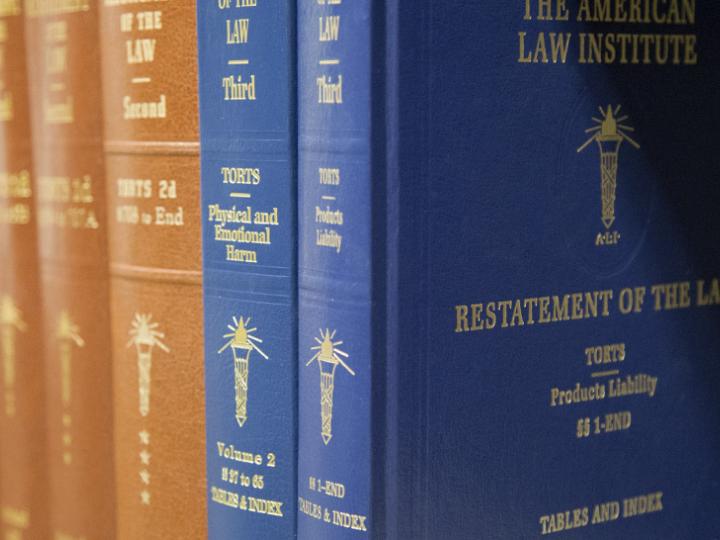In Feasel v. Tracker Marine LLC, 496 P.3d 95 (Utah 2021), the Supreme Court of Utah clarified that a manufacturer or supplier of a product owes a duty to adequately warn the ultimate user of latent dangers associated with the product, and adopted Restatement of the Law Third, Torts: Products Liability § 2(c) in holding that “the question of whether a duty to warn the ultimate user is satisfied by warning the intermediary is one that must be answered based on ‘reasonableness in the circumstances.’” The court additionally expanded its recognition of the learned-intermediary rule as expressed in § 2(c) and Restatement of the Law Second, Torts § 388.
This case arose when a passenger and driver of a fishing boat were ejected into the water and, because the driver was not wearing the safety stop-switch lanyard, the unmanned boat continued running, moving in a circular pattern that trapped the passenger and caused him to be struck at least three times by the boat’s propeller. In a phenomenon known in the boating industry as the “circle of death,” a running boat without a driver has a tendency to turn sharply to the right and continuously circle tightly in the water, which can trap ejected drivers or passengers inside the circle and cause the propeller to repeatedly strike and cause injury or death to those trapped. The injured passenger filed an action in Utah state court against the boat manufacturer and the engine manufacturer, alleging that the manufacturers were liable for failure to adequately warn the driver of the danger associated with failure to wear the lanyard, and for failure to warn boat passengers of the danger. The state district court granted summary judgment for the manufacturers, finding, among other things, that the manufacturers did not owe a duty to warn the passenger of the danger arising from the driver’s failure to wear the lanyard. Reversing, the court of appeals held, inter alia, that the manufacturers had a duty to directly warn the passenger of the danger.
The Supreme Court of Utah remanded to the district court for further proceedings. The court agreed in part and disagreed in part with the court of appeals, clarifying that, as a matter of law, a boat manufacturer or supplier had a duty to warn the ultimate user of dangers associated with the boat (citing Restatement of the Law Second, Torts § 402A, Comment h), and adopting the standard of “reasonableness in the circumstances” for determining whether a manufacturer or supplier had to warn the ultimate user directly or could rely on an intermediary to issue the warning (citing Restatement of the Law Third, Torts: Products Liability § 2, Comment i).
The court cited § 2 in explaining that “a manufacturer who knows or should know of a risk associated with its product may be directly liable to the user if it fails to warn adequately of the danger,” and, in accordance with Restatement of the Law Second, Torts § 402A, a boat passenger constituted an ultimate user, giving rise to a duty to warn. Acknowledging that it had previously adopted Restatement of the Law Second, Torts § 388 to address warnings for products that were often supplied for the use of others through intermediaries, the Supreme Court of Utah adopted Restatement of the Law Third, Torts: Products Liability § 2(c), “subject to interpretation in accordance with Utah’s established law.” The court observed that both Restatement of the Law Second, Torts § 388 and Restatement of the Law Third, Torts: Products Liability § 2 “recognize that there are circumstances under which it may be unnecessary or nearly impossible for a manufacturer or supplier to directly warn the ultimate user.” The court concluded that the “reasonableness in the circumstances” standard should be used to determine whether the manufacturer or supplier had a duty to directly warn the user or whether the user could be warned through an intermediary. Quoting § 2, Comment i, the court stated that “[a]mong the factors to consider when determining reasonableness are ‘the gravity of the risks posed by the product, the likelihood that the intermediary will convey the information to the ultimate user, and the feasibility and effectiveness of giving a warning directly to the user.”’
In response to the manufacturers’ argument that, under the learned-intermediary rule, they had satisfied any duty to warn the passenger by adequately warning the purchaser and then relying on the purchaser to warn the passenger, the court pointed out that it had previously recognized the rule in narrow circumstances by allowing pharmacists and drug manufacturers to warn physicians of drug risks and to rely on the physicians to warn their patients, the ultimate users, of the risks. The court now expanded the rule, consistent with Restatement of the Law Second, Torts § 388 and Restatement of the Law Third, Torts: Products Liability § 2(c). “The rule weighs the considerations from section 388 and section 2(c) in determining whether a manufacturer has fulfilled its duty to warn the ultimate user by adequately warning the learned intermediary.” The court noted that a learned intermediary was “a sophisticated party or a party with a full range of knowledge ‘equal to that of the supplier,’” and explained that “[i]t may be reasonable to rely on the learned intermediary where there is a high likelihood that the intermediary will convey the information to the ultimate user,” such as “where the employer is the intermediary and employees are the ultimate users.”
